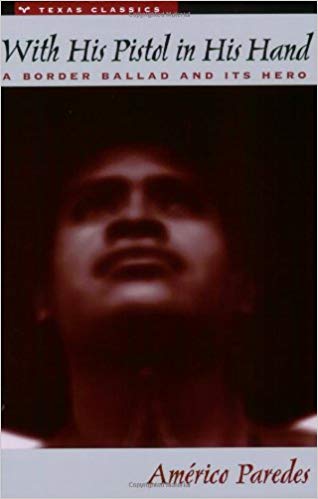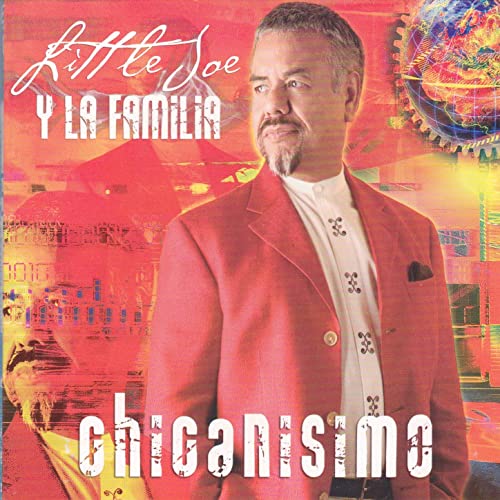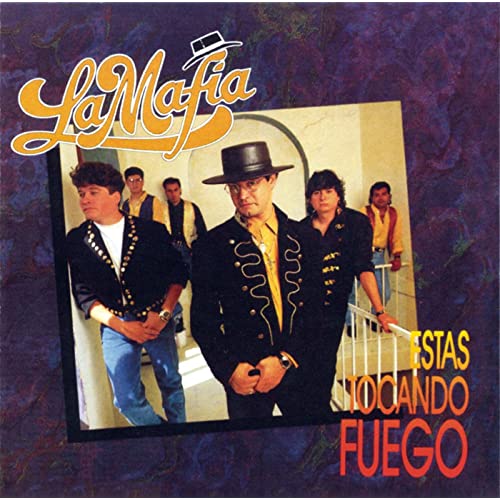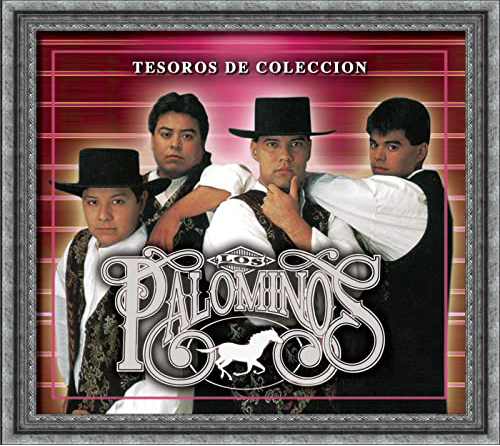What do you get when you mix American, European, and traditional Mexican influences and simmer them in Texas? Tejano.
In the 1930s, the musical intersection of cultures around the Texas-Mexico border birthed a new sound. The name of the musical mashup came from the name given to Mexican-Americans living in Texas: Tejano. It evolved from many influences — part corrido, a story-song tradition whose lyrics about current events functioned like a newspaper; part mariachi, the Mexican ranchera music rooted in the state of Jalisco; part norteño, the Germanic-inflected traditional rural sound of the northern reaches of Mexico. Tejano would become its own distinctive sound, eventually taking on characteristics of American country and rock in the 1950s and ’60s and exploding in popularity in the ’90s with the incomparable Selena Quintanilla-Pérez.
Read: With His Pistol in His Hand: A Border Ballad and Its Hero by Américo Paredes
The Formative Years: 1930s–40s
Tejano trailblazers Lydia Mendoza, Narciso Martinez, and Bruno Villarreal were among the first Mexican-Americans in Texas to make records. Mendoza, a singer known as the Lark of the Border, came from a San Antonio family of traveling musicians. Martinez and Villarreal were accordionists from the Rio Grande Valley. Their recordings blended rancheras and boleros with European musical styles. Polka and waltz informed the rhythm and sound, punctuated by the accordion, which had been brought to Texas and Northern Mexico by German, Polish, and Czech immigrants.
Listen: “Mal Hombre” by Lydia Mendoza, “La Cuquita” by Narciso Martinez
The Post-War Split: 1950s
By the end of World War II, the music created by Tejanos diverged. Conjunto, the music of small combos featuring the accordion and bajo sexto 12-string guitar, was favored by working-class Mexican-Americans in South Texas. It was popularized by Santiago Jimenez and his son Flaco Jimenez, and by modernists such as Esteban (Steve) Jordan, regarded as the “Jimi Hendrix of the Accordion.”
Beto Villa, Isidro Lopez, and Oscar Martinez were among the best-known leaders of the other Tex-Mex sound, orquesta. A Texas-Mexican variant of big-band swing popular in the 1940s into the 1950s, orquesta incorporated a distinctive Latin/Mexican flavor and Spanish lyrics.
Listen: “Diganle” by Isidro Lopez, “Mi Unico Camino” by Conjunto Bernal
The Rock Influence: 1960s–70s
The orquestas set the table for the rise of La Onda, the Wave, which transformed Texas-Mexican music into a modern sound influenced by the rhythm and blues and rock ’n’ roll sweeping across America during the 1960s and ’70s. The singing was in Spanish, except for some cover versions of English-language hits, a few of which made their way into the mainstream, such as “Talk to Me” by Sunny and the Sunliners.
At the same time, other Texas-Mexican musicians eschewed cultural traditions to fully embrace pop music and sing in English. Rockero Baldemar Huerta out of San Benito near the Texas-Mexico border achieved fame in the 1960s as Freddy Fender, with the hits “Wasted Days, Wasted Nights” and “Holy One,” then re-emerged in the 1970s as a country crooner with the bilingual hit “Before the Next Teardrop Falls.”
By the 1970s, La Onda had given birth to La Onda Chicana as big bands introduced synthesizers in lieu of accordion and horns. La Onda standard bearers Little Joe and the Latinaires from Temple, Texas, changed their name to Little Joe y la Familia (the Family) to reflect the band’s cultural pride. Joining this wave were Tortilla Factory, Ruben Ramos & the Mexican Revolution, Latin Breed, Snowball and Company featuring Laura Canales, and Fandango USA.
Listen: “Las Nubes” by Little Joe y la Familia, “Talk to Me” by Sunny and the Sunliners
Coming of Age: 1980s
The 1980s formally ushered in the age of Tejano music, and the term became an all-purpose designation for Texas-Mexican big bands. The polka provided Tejano’s primary rhythm, although cumbia, which originated in Colombia and became popular throughout Latin segments of the United States, began to get featured turns. Tejano’s popularity grew far beyond Texas’ borders and even gained footholds in Mexico and other Latin countries. The annual Tejano Music Awards, founded in 1980, attracted nearly 40,000 to the Alamodome in San Antonio, with acts like Roberto Pulido, Lisa Lopez, Little Joe Hernandez, Laura Canales, and Joe Lopez coming to dominate the scene. Selena began scooping up awards.
Listen: “Cuatro Caminos” by Laura Canales, “Laura Ya No Vive Aqui” by Grupo Mazz, “Mi Loca Pasion” by La Mafia
The Peak: 1990–95
The years between 1990 and 1995 saw the peak of Tejano. Major American record labels and beer companies spent millions signing Tejano bands to recording contracts and endorsement deals, which expanded the bands’ fan bases far beyond Texas and the Southwest.
Emilio Navaira, “the King of Tejano” who was also known simply by his first name, was promoted in Nashville as the Latino George Strait. La Mafia, led by balladeer Oscar de la Rosa, gained popularity throughout Latin America with a contemporary international sound and in 1992 became the first Tejano artists to sell more than a million albums with Estás Tocando Fuego. Grupo Mazz developed a hardcore following by sticking to the Tejano basics musically while presenting a state-of-the-art stage show the equal of any arena rock act. Four Texans with Mexican-American roots — Freddy Fender, Flaco Jiménez, Augie Meyers, and Doug Sahm — came together to form the Texas Tornados supergroup, “the Beatles of Tex-Mex,” Sahm declared.
And then there was Selena y Los Dinos, selling hundreds of thousands of albums and singles and setting a Houston Rodeo attendance record by drawing more than 66,000 fans to their final Astrodome performance. Among other awards and milestones: In 1991, their record Ven Conmigo was certified gold, the first Tejano album by a female artist to nab the coveted certification. Selena became the first female Tejano artist to win a Grammy when her 1993 Live album took home Best Mexican-American Album; the following year, Amor Prohibido was nominated for a Grammy for Best Mexican-American Performance.
Listen: “La Charanga” by Fandango USA, “Soy de San Luis” by the Texas Tornados, “Un Million de Rosas” by La Mafia, “Lo Voy Hacer Por Ti” by Mazz, “Ahora y Siempre” by La Mafia
Tejano Today: 1996–Present
Following Selena’s death on March 31, 1995, the air went out of Tejano and the music deflated. The Tejano Music Awards crowds declined, concert attendance and album sales fell off, and the major record labels went away. In 2008, an intoxicated Emilio suffered serious head injuries when the band tour bus he was driving crashed in Houston (he died at age 53 in 2016). Grupo Mazz split in two. The leader of one version of Mazz, Joe Lopez, was convicted of sexual assault of a minor in 2006 and served 11 years in prison.
Tejano’s biggest post-Selena act, the band Intocable — who favored cowboy hats, boots, and a Western look onstage — rose to the top with a retro, almost norteño sound.
Listen: “Y Todo Para Que” by Intocable, “Fuiste Mala” by Intocable and Kumbia Kings, “Eres lo Que Mas Quiero” by Los Palominos. Hear Tejano on these internet radio stations: ClubTejano.com, KXTN.com, supertejano1021.com, kedaradio.com, TejanoToTheBone.com, Puro Tejano Fierro Radio HD, Tejano Soul Radio, and Pancho Pistolas.
Images from Amazon.























